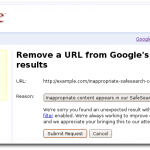Irony Alert! Google Boycott Bites As Video Safety Improves
Irony Alert! Google Boycott Bites As Video Safety Improves
by Sean Hargrave, Staff Writer, March 30, 2017
Just as the brand safety boycott of YouTube that dominated this month’s headlines shows no sign of abating, Integral Ad Science has crunched the safety numbers. The results are in. You may just be surprised to know that actually, brand safety ended 2016 in better shape than it started.

Usually, the standout figure from its research, reported on in eMarketer, would be that video viewability has shot up from 40% to 58%. Completed view rates are up from 27% to 35%. That’s a big leap forward for what was, until a month ago, a far bigger gripe between advertisers and publishers. Viewability dominated the headlines for the first two months of the year as the transparency debate raged. So you’d think we would be talking about Integral Ad Science deeming viewability, across display and video, to be just 49%. But then that brand safety investigation from The Times blew up in Google’s face.
It’s interesting to see, then, that while the figures don’t relate to 2017, they do show a direction of travel during 2016. The risk of videos appearing next to inappropriate material decreased from the first half of 2016 figure of 11.2% to 8.9% in the second half. By my reckoning, that’s just over two percentage points better. That’s, very roughly, a 20% improvement? Video is now far more comparable to display for brand safety, which saw a single-percentage-point reduction to 6.8% by the end of 2016.
So, we have an ironic situation here, don’t we? Just as video brand safety is getting better, we have YouTube being hauled over the coals at Westminster for allowing government advertising to feature next to extremist videos and we have famous, big spending brands lining up to withdraw their budget from YouTube.
The one winner out of all of this appears to be the broadcaster’s video-on-demand service. Campaign doesn’t have official figures, but estimates that three major broadcasters are receiving a million pounds of new revenue per week and several others are getting “six figure” upgrades to budgets.
So there is a logical argument that the brands have never had it so good, and so should not be too vehement in their stance against Google. Then again, there’s probably a more sound argument that Google is getting what is deserves with the YouTube boycott. The only trouble is that it came a year or so late, just as the figures were showing that things were getting better. So, although we have an ironic situation of the problem demonstrably improving just as brands cotton on and react to brand safety issues, nobody would say they are wrong in calling a boycott.
The very simply truth for Google and YouTube is that now the genie is out of the box, it will have to offer a brand safe environment and can’t get away with shrugging its shoulders with a “there’s too many videos to check” defence. Maybe a brand safe walled garden, of only approved video publishers, is an idea? A coral in the middle of the wild west where brands can advertise safely?
As the week’s events have shown, the ultimate impetus for Google to act here is money, because there are two sides to this. The boycott is biting at the same time that brands find that there is always capacity elsewhere with quality broadcast VOD.
The ball is firmly in Google’s court.
MediaPost.com: Search Marketing Daily
(28)











